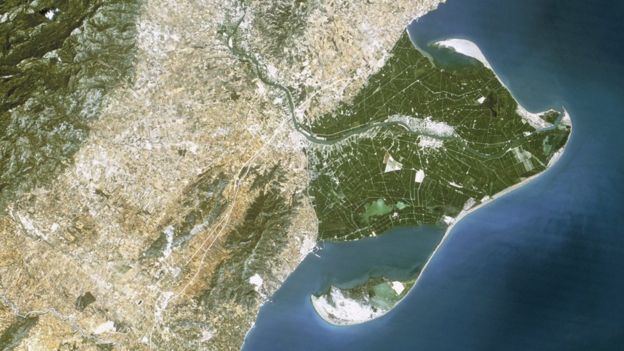 | ||
Similar Ebro, Costa Daurada, PortAventura World, Serra del Montsià, Ports de Tortosa‑Beseit | ||
Fishing in the ebro delta la pesca en el delta del ebro
The Ebro Delta (Catalan: Delta de l'Ebre, [ˈdɛɫtə ðə ˈɫeβɾə], Spanish: Delta del Ebro, [ˈdelta del ˈeβɾo]) is the delta region of the Ebro River (Catalan: Ebre, Spanish: Ebro), in the Province of Tarragona, Catalonia, in northeastern Spain. It is on the Mediterranean Sea, and is the northernmost point, by some designations, of the Gulf of Valencia. Its location per Ramsar site designation is 40°43′N 00°44′E.
Contents
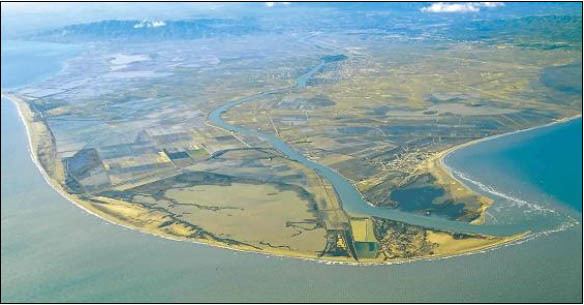
Geography
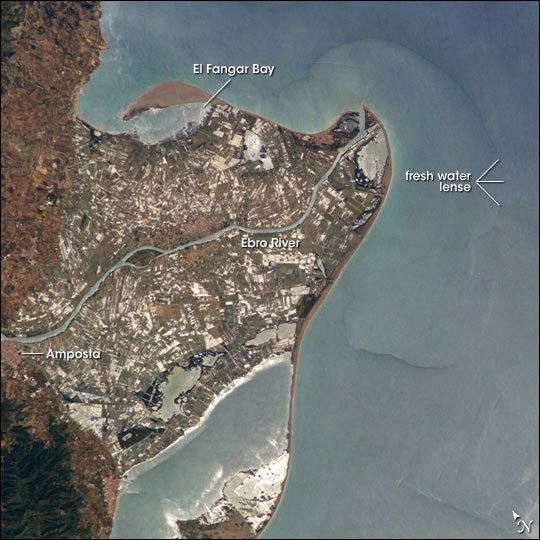
The Ebro Delta is one of the largest wetland areas 320 square kilometres (79,000 acres) in the western Mediterranean region. The Ebro delta has expanded rapidly on soils washed downriver. The town of Amposta, a seaport in the 4th century, demonstrates the historical rate of growth of the delta as it is now located well inland from the current river mouth. The rounded form of the delta attests to the balance between sediment deposition by the Ebro and removal of this material by wave erosion.

The area at the primary mouth of the Ebro is currently protected by several fluvial islands: the Isle of Garxal (280 hectares (690 acres)), the Isle of Sant Antoni (170 hectares (420 acres)), and the Isle of Buddha (1,231 hectares (3,040 acres)).
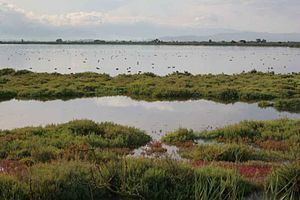
The Ebro Delta was placed, with 7.736 ha in 1993, on the Ramsar Convention list of wetlands of international importance as defined for the conservation and sustainable utilization of wetlands, recognizing the fundamental ecological functions of wetlands and their economic, cultural, scientific, and recreational value.
Agriculture
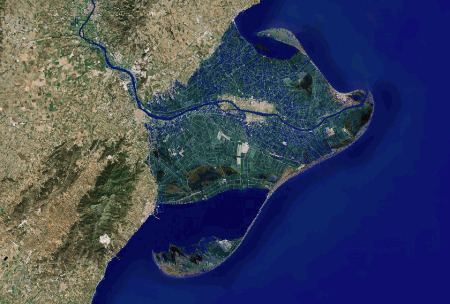
Some delta areas have been drained for agricultural use over the centuries. The modern delta is in intensive agricultural use for rice, fruit (in particular citrus), and vegetables. A network of canals and irrigation ditches constructed by both agricultural and conservation groups are helping to maintain the ecologic and economic resources of the Ebro Delta.
The zebra mussel, an invasive species, is expanding through the delta and upstream in Ebro waters. Due to its rapid rate of reproduction with a competing advantage, the zebra mussel is adversely affecting native species.
Wildlife
In 1983 Spain designated a large part of the delta as a natural park. Ebro Delta Natural Park (Catalan: Parc Natural del Delta de l'Ebre, Spanish: Parque Natural del Delta del Ebro) has a total surface area of 7,802 hectares (19,280 acres) The natural park has protected wetlands, beaches, marshes, salt pans, and estuaries that provide extensive habitats.
The park is of international importance for 8 of its plant species and 69 of its vertebrate fauna. It has some 95 breeding species of birds, is also very important for over 300 species of a wide range of transient and overwintering species, and serves as an essential stopover point for large numbers of migratory birds and waterfowl. The Ebro delta has the world's largest colony of Audouin's gulls. In 2006 it held a record number of more than 15,000 pairs.
